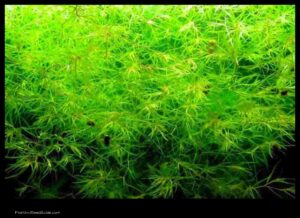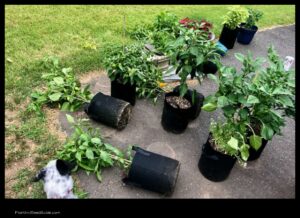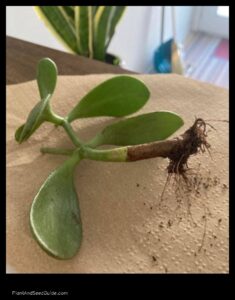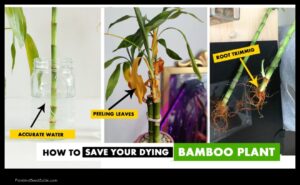Eggshells are a natural and organic way to fertilize indoor plants. They are a good source of calcium, which is essential for plant growth. Eggshells also contain other nutrients, such as magnesium, phosphorus, and potassium.
Using eggshells as fertilizer is a simple and inexpensive way to improve the health of your indoor plants. Simply crush the eggshells into a fine powder and sprinkle them around the base of your plants. You can also mix the eggshell powder with water to create a liquid fertilizer.
Are Eggshells Good for Indoor Plants?
Eggshells are a safe and effective way to fertilize indoor plants. They will not harm your plants, and they will help them to grow strong and healthy.
Benefits of Using Eggshells for Indoor Plants
Eggshells provide a number of benefits for indoor plants, including:

- Calcium: Eggshells are a good source of calcium, which is essential for plant growth. Calcium helps to strengthen plant cell walls and promote root development.
- Magnesium: Magnesium is another important nutrient for plant growth. It helps to improve photosynthesis and the production of chlorophyll.
- Phosphorus: Phosphorus is essential for the production of energy and the growth of new cells.
- Potassium: Potassium helps to improve the overall health of plants and helps them to resist disease.

How to Use Eggshells for Indoor Plants
There are a few different ways to use eggshells for indoor plants. You can:
- Crush the eggshells into a fine powder and sprinkle them around the base of your plants.
- Mix the eggshell powder with water to create a liquid fertilizer.
- Dig the eggshells into the soil around your plants.
When using eggshells as fertilizer, it is important to use them sparingly. Too much eggshell can actually damage your plants. A good rule of thumb is to use about 1/4 cup of eggshell powder per plant every 6 months.
How Much Eggshell to Use
As mentioned above, it is important to use eggshells sparingly. A good rule of thumb is to use about 1/4 cup of eggshell powder per plant every 6 months.
How Often to Use Eggshells
You can use eggshells as fertilizer every 6 months or so. However, if your plants are showing signs of calcium deficiency, you may need to use them more often.
Side Effects of Using Eggshells for Indoor Plants
Using eggshells as fertilizer is generally safe for indoor plants. However, there are a few potential side effects to be aware of:
- Too much eggshell can actually damage your plants.
- Eggshells can attract pests, such as ants and rodents.
- Eggshells can harbor bacteria.
To avoid these potential side effects, it is important to use eggshells sparingly and to properly dispose of them after use.
Tips for Using Eggshells for Indoor Plants
Here are a few tips for using eggshells for indoor plants:
- Use eggshells that are free of dirt and bacteria.
- Crush the eggshells into a fine powder before using them.
- Use eggshells sparingly. A good rule of thumb is to use about 1/4 cup of eggshell powder per plant every 6 months.
- Dig the eggshells into the soil around your plants.
- Water your plants thoroughly after using eggshells as fertilizer.
Q: Can I use eggshells for outdoor plants?
A: Yes, you can use eggshells for outdoor plants. However, it is important to note that eggshells can attract pests, such as ants and rodents. To avoid this,
| Feature | Eggshells | Indoor Plants | Fertilizer | Compost | Egg Shells for Plants |
|---|---|---|---|---|---|
| Eggshells are a natural and organic way to fertilize indoor plants. | Indoor plants can benefit from the nutrients found in eggshells, such as calcium and magnesium. | Eggshells can be used as a fertilizer for indoor plants. | Eggshells can be composted with other organic materials. | Eggshells can be used as a natural pest deterrent for indoor plants. | |
| Benefits | Eggshells can help to improve the soil quality of indoor plants. | Eggshells can help to increase the growth rate of indoor plants. | Eggshells can help to strengthen the stems of indoor plants. | Eggshells can help to improve the drainage of indoor plants. | Eggshells can help to deter pests from indoor plants. |
| How to Use | To use eggshells as a fertilizer for indoor plants, crush the eggshells into a fine powder. | To use eggshells as a compost for indoor plants, add the crushed eggshells to your compost pile. | To use eggshells as a pest deterrent for indoor plants, place the crushed eggshells around the base of the plant. | ||
| How Much to Use | Use about 1/4 cup of crushed eggshells per plant per month. | Add the crushed eggshells to your compost pile in a 1:1 ratio with other organic materials. | Place the crushed eggshells around the base of the plant in a 1:1 ratio with other organic materials. | ||
| How Often to Use | Use eggshells as a fertilizer for indoor plants once per month. | Add the crushed eggshells to your compost pile once per month. | Place the crushed eggshells around the base of the plant once per month. |
Benefits of Using Eggshells for Indoor Plants
Eggshells are a natural source of calcium, which is an essential nutrient for plant growth. Calcium helps to strengthen plant cell walls and promote healthy root growth. It can also help to prevent or reduce the incidence of common plant diseases, such as powdery mildew and leaf spot.
In addition to calcium, eggshells also contain other nutrients that are beneficial for plants, such as magnesium, phosphorus, and potassium. These nutrients help to promote healthy leaf growth, flowering, and fruit production.
Overall, eggshells are a safe and effective way to improve the health and vigor of your indoor plants.
How to Use Eggshells for Indoor Plants
To use eggshells as a fertilizer for your indoor plants, you can follow these steps:
- Gently rinse the eggshells under cold water to remove any dirt or debris.
- Place the eggshells in a food processor or blender and grind them into a fine powder.
- Add the eggshell powder to your potting soil at a rate of 1 teaspoon per gallon of soil.
- Water your plants as usual.
You can also use eggshells as a mulch around your plants. To do this, simply crush the eggshells into small pieces and spread them around the base of your plants. The eggshells will help to retain moisture in the soil and deter pests.
Eggshells are a great way to naturally fertilize and improve the health of your indoor plants. By following these simple steps, you can help your plants thrive and grow.
How Much Eggshell to Use
You should only use a small amount of eggshells for your indoor plants.
You can also crush the eggshells into a fine powder before adding them to the soil.A good rule of thumb is to use about 1/4 cup of eggshells per 10-gallon pot of soil..
If you use too many eggshells, it can actually damage your plants. The eggshells can release too much calcium into the soil, which can cause the soil to become alkaline. This can make it difficult for your plants to absorb nutrients from the soil.
If you are unsure about how much eggshell to use, it is always best to err on the side of caution and use less. You can always add more eggshells later if needed.
How Often to Use Eggshells
You can use eggshells as a fertilizer for indoor plants once a month. However, you may need to use them more often if your plants are growing quickly or if they are in a nutrient-poor soil.
To use eggshells as a fertilizer, simply crush them up into a fine powder and sprinkle them around the base of your plants. You can also mix the eggshell powder into your potting soil when you are repotting your plants.
If you are using eggshells as a fertilizer, it is important to make sure that they are completely dry before you use them. Wet eggshells can mold and attract pests, which can damage your plants.
Side Effects of Using Eggshells for Indoor Plants
There are a few potential side effects to using eggshells for indoor plants. These include:
- Eggshells can attract pests, such as ants and cockroaches.
- Eggshells can harbor bacteria, which can be harmful to plants.
- Eggshells can block drainage holes in pots, which can lead to root rot.
It is important to be aware of these potential side effects before using eggshells for indoor plants. If you are concerned about any of these side effects, you can avoid them by following the tips in the following section.
Tips for Using Eggshells for Indoor Plants
Here are some tips for using eggshells for indoor plants:
- Use eggshells that are free of dirt and other debris.
- Grind the eggshells into a fine powder before using them.
- Add the eggshell powder to the soil around your plants, or mix it into a compost tea.
- Use eggshells sparingly, as too much eggshell can damage your plants.
- Reapply eggshells to your plants every few months, as the nutrients will eventually be depleted.
By following these tips, you can help your indoor plants thrive with the added nutrients from eggshells.
Last Words…
Eggshells are a safe and effective way to fertilize indoor plants. They are a natural source of calcium and other nutrients that plants need to thrive. Eggshells can be used as a top dressing, composted, or crushed and mixed into the soil. When used correctly, eggshells can help to improve the health of your indoor plants and promote their growth.
FAQ
Q: Are eggshells good for indoor plants?
A: Yes, eggshells are good for indoor plants. They are a natural source of calcium and other nutrients that can help to improve the health of your plants.
Q: How do I use eggshells for indoor plants?
A: You can use eggshells in a variety of ways for indoor plants. You can crush them up and add them to the soil, or you can make a tea out of them and water your plants with it.
Q: How much eggshell should I use for indoor plants?
A: You don’t need to use a lot of eggshells for indoor plants. A handful of crushed eggshells per plant is usually enough.
Q: How often should I use eggshells for indoor plants?
You can use eggshells for indoor plants every few weeks or so. Just be sure to not use too much eggshells, as this can damage your plants.
Q: What are the side effects of using eggshells for indoor plants?
There are no known side effects of using eggshells for indoor plants. However, if you use too much eggshells, it can damage your plants.
Q: What are some tips for using eggshells for indoor plants?
Here are some tips for using eggshells for indoor plants:
- Crush the eggshells up before using them. This will make them easier for your plants to absorb.
- Add the eggshells to the soil around your plants. You can also mix them into the potting mix when you are repotting your plants.
- Make a tea out of eggshells by boiling them in water for a few minutes. Let the tea cool down and then water your plants with it.
Q: Can I use eggshells for indoor plants?
A: Yes, eggshells can be used as a fertilizer for indoor plants. They are a good source of calcium, which is essential for plant growth.
Q: How do I use eggshells for indoor plants?
A: You can crush eggshells into a fine powder and sprinkle them around the base of your plants. You can also soak eggshells in water for a few days and then use the water to water your plants.
Q: How often should I use eggshells for indoor plants?
A: You can use eggshells for indoor plants once a month or every other month.
- Wild Rose Country: Exploring Untamed Beauty - July 15, 2024
- Wildflower Nursery Decor: Bringing Nature Indoors - July 15, 2024
- Young Sprout of Grass: Nurturing New Life - July 15, 2024








